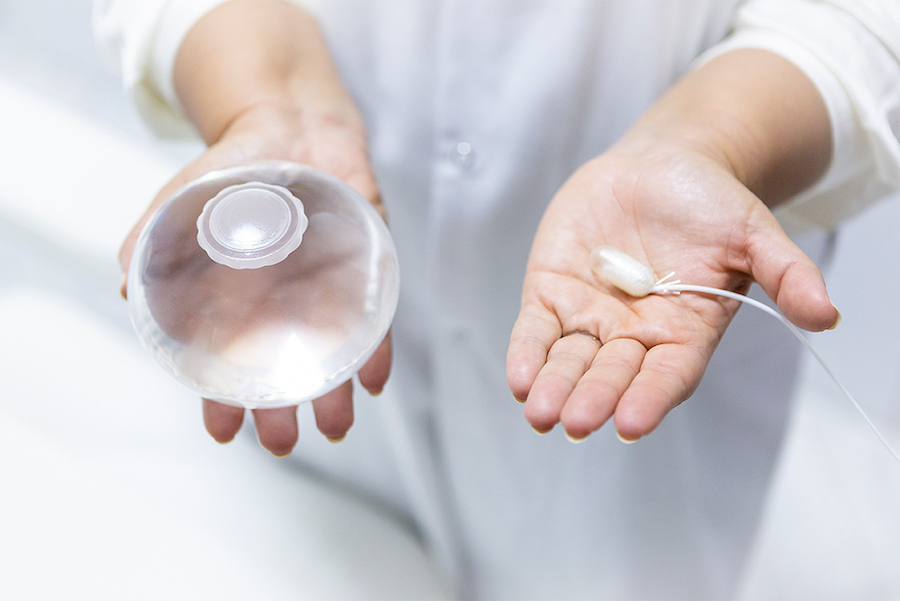How exactly does the swallowable weight-loss balloon work?
The Allurion treatment was approved in 2020 and is now being rolled out across the NHS
A weight-loss balloon, which patients swallow as a pill, is now being offered to NHS patients – and it only takes a short appointment with a doctor.
Designed to make people feel fuller, the device promises to help patients lose an average of 10-15% of their body weight in 16 weeks, according to data.
While already available via private clinics, Allurion, the company behind it, said they’ve been in talks about rolling out the treatment out across NHS Trusts since it was approved in 2020 by the National Institute for Health and Care Excellence (NICE). Only two NHS patients have received it so far (at Musgrove Park Hospital, part of Somerset NHS Foundation Trust), but more are set to have it soon.
So, what exactly is it, does it work, and what else do you need to know?
What exactly is the weight-loss balloon and how does it work?

The balloon is filled with water once inside the stomach
The fact the swallowable balloon requires no surgical procedures sets it apart from many similar treatments.
“No surgeries, no needles, no endoscopy, and no sedation,” says Dr Asish Bassi, consultant gastroenterologist at Pall Mall Medical, who has treated many patients with the Allurion balloon. “Just a grapefruit-sized water balloon in your stomach.
“It makes you feel full, so you eat less. Plus, you get ongoing support from a dedicated nutritionist to create a personalised meal plan. It’s not just about losing weight; it’s about building lasting healthy habits like right-sized portions, smart food choices, and avoiding snacks.”
What happens during the appointment and is it easy to swallow?
“You swallow a capsule, not much bigger than a large vitamin, with a tiny balloon attached to a tube and guide wire,” says Bassi. “We use X-rays to check the capsule’s safe position in your stomach, then fill the balloon with water. After another X-ray to confirm safety, we remove the tube, and you’re done. The whole process takes just about 20 minutes, and you’re free to head home right after.”
Does the balloon eventually need to be removed?
Bassi explains: “The balloon naturally passes after around four months. You might experience some cramps during this process, but they are generally tolerable. In 2% of cases, individuals may vomit the deflated balloon, which could result in a sore throat lasting a few days.”
Is it effective?

A diet and nutrition plan is also part of the program
According to patient data, results have been positive so far. Katie Hilton, clinical dietitian at Feel Gut, who specialises in personalised obesity management, points out the treatment generally results in “a 10-15% weight loss in four months”.
Hilton adds: “What separates this from other weight-loss treatments, even the highly popular medical weight-loss injections, is that people who completed the treatment course managed to keep 95% of the weight-loss off for a year after treatment had finished.
“We have seen with medical weight-loss injections, which manipulate the brain’s hunger signals, as soon as treatment is stopped, weight gain is almost a formality.”
Who is the treatment designed to help?
Bassi says the program is “tailored for individuals struggling with weight loss despite numerous attempts. To be eligible, a patient must have a BMI exceeding 27 and undergo a specialist assessment to ensure suitability for the program,” he adds.
For weight-loss treatment on the NHS, your overall individual health will be considered, as well as your weight, BMI and other factors.
Are there risks?
While treatments need to meet certain safety requirements to be approved, all procedures carry a degree of risk, which should always be discussed before making any decisions.
“Feeling a bit nauseous, experiencing cramps, or occasional vomiting is normal initially,” says Bassi. “These symptoms are usually self-limiting and can be eased with medications provided.
“Following the recommended diet is crucial during this time. Taking some time off [work] and mentally preparing yourself is a good idea, as these symptoms are common for most people,” he adds. “Severe intolerance requiring removal of the balloon is rare. There is an extremely rare possibility of a bowel blockage if the balloon deflates prematurely.”
The Press Association
Latest posts by The Press Association (see all)
- Princess Charlotte ‘s ninth birthday marked by picture release - May 2, 2024
- Strong passwords more important than ever, experts warn - May 2, 2024
- Princess Charlotte set to celebrate ninth birthday - May 1, 2024
- How edible flowers can make your dishes look and taste divine - April 30, 2024
- Beauty entrepreneur Liz Earle on turning 60: Ageing is a gift - April 30, 2024





















